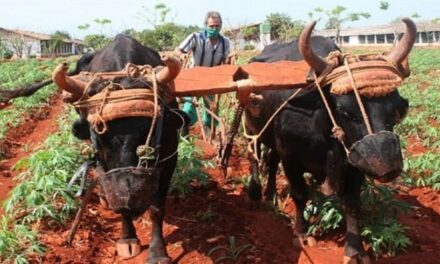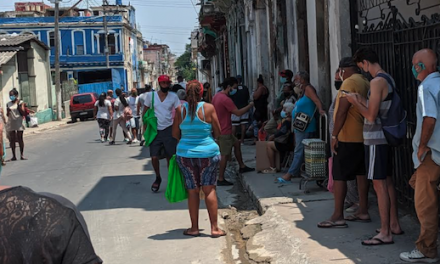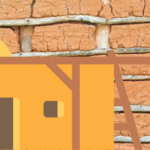Cuba before 1959 imported approx. 25% – 27% of the food it consumed. It now imports 82%, almost four times that of the pre – Castro era index. The U.S. alone has brought more than $7 billion in the last 21 years primarily in food, including 3.2 million tons of frozen chicken.
Why? This question must be answered by Raul Castro. He was born and raised in the countryside and was manager of his father’s rural store a joined to their 10,489-hectare large estate (“Las Manacas”) in Birán, Cuba. One should note that Raul did not use standard money at the time to pay his more than 350 agricultural workers, but rather with “vouchers” that only served to buy products in his own store, which his youngest son managed after being expelled from the Colegio de Belén in Havana for his terrible academic performance.
On the lands of Castro Sr. (781 hectares of his property, and 9,708 hectares leased) they produced sugarcane, bananas, cattle, pigs, goats, laying hens, broilers, and good cheeses. They also owned a pine forest for the timber industry.
It is sufficient to say that the Galician landowner died (in October 1956, two months before his sons Fidel and Raúl landed in Las Coloradas to conquer Cuba) and left a fortune of approx. $ 600,000 dollars, equivalent to about 6.1 million dollars today in 2023.
The State prevents private farmers from producing more goods.
Of course, Raúl “The Cruel” would never answer the question of “why?”, because the answer is a serious blow to the “socialist revolution”, for the following four reasons:
1.-Any farm or huge estate in which “the eye of the master does not fatten the horse”, or rather where the owner cannot proactively manage their land, does not produce enough. It is a failure. Therefore, all over the world agriculture is a private activity, except in Cuba and North Korea (where hunger and food shortages are part of the national culture). In China and Vietnam, land ownership is state-owned but has been handed over incrementally to the private sector with 70-year contracts. The usufructuaries sell their products directly to market, at prices set by themselves, not by the government.
2) The temporary owners of their farms are forced to deliver 80% of their crops to the state at miserable prices. In addition, they lack a wholesale market to acquire agricultural inputs and equipment, and do not have access to credit to expand their crops and their farms. As tenants (usufructuaries/beneficiaries), they do not own the land and therefore have a ceiling for “productive enthusiasm”. In conclusion, all the noted factors end in the same result: reluctance to produce.
3) Currently in Cuba, The State tells farmers what they can sow; if they behave badly politically, they cancel the lease. Also, if the farmer becomes very successful, they go to jail for “illicit enrichment”. In the end, the result is the same: reluctance to produce, also hit by the anxiety of owning the land and being free.
4) If the first three factors mentioned are also present, the result is the same, and the State has to constantly invest a lot of money in agriculture, for minimal output.
The Regime invests 12 times more in tourism than in agriculture
As for the lack of capital investment in the Cuban countryside, its sufficient to say that in 2022 the regime invested 23,359 million pesos in the tourism sector and barely $1,855 million in agriculture. 12.5 times more money was invested in hotels for foreign tourists than to produce food for the Cuban people.
That is so scandalous that the UN’s International Fund for Agricultural Development (IFAD) in a report not long ago concluded that in Cuba “due to low capitalization and lack of technological innovation, the agricultural sector is underexploited,” since “only 2.6 million of the 6.4 million hectares of arable land are used” that the island has.
IFAD adds: “low productivity in the agriculture and livestock sectors is a response to declining investment over the years, scarcity of technical assistance services, land degradation…”
Cuban peasants own only 20% of arable land.
The key to this disaster is that peasants, individual or cooperatives, own just 20% of the island’s 6.4 million hectares of arable land. The omnipresent state owns the other 80%, some 5.12 million hectares, according to official figures from 2021.
This shows the deception of Fidel Castro, who from the Sierra Maestra promised that he would give ownership of the lands to the peasants and what he did was to nationalize and keep them for himself; these actions were encouraged by the Stalinist Che Guevara and his Maoist conception of the countryside as the focus of their “Social Revolution”.
Of the state lands, 31% have been leased (rented or given in usufruct) to farmers. The regime reported in 2021 that 3.1 million hectares i.e., 49% of arable land on the island was cultivated in Cuba. However, that does not coincide with the UN study cited, nor with economists who say that between 53% and 57% of the national agricultural area is not cultivated; it rests idle, taken over by invasive marabú plants. It does not produce a single lemon.
If agriculture is not privatized, hunger will worsen.
In 2022, peasants and tenants in charge of 51% of the country’s land generated 80% of all Cuban agricultural production, according to Prime Minister Manuel Marrero. And state-owned enterprises barely a fifth, and with probably the lowest returns in the entire world.
In Conclusion: If Castro II does not liberate the Cuban countryside and privatize agriculture, hunger in Cuba will worsen. It is no longer so far-fetched to think that there could be a famine for the first time since the “Reconcentration” imposed by the genocidal Spanish governor Valeriano Weyler in 1896.
(The “Why” behind “El Cruel” and his choice to NOT liberate the Cuban countryside will be further addressed in another article.)



























